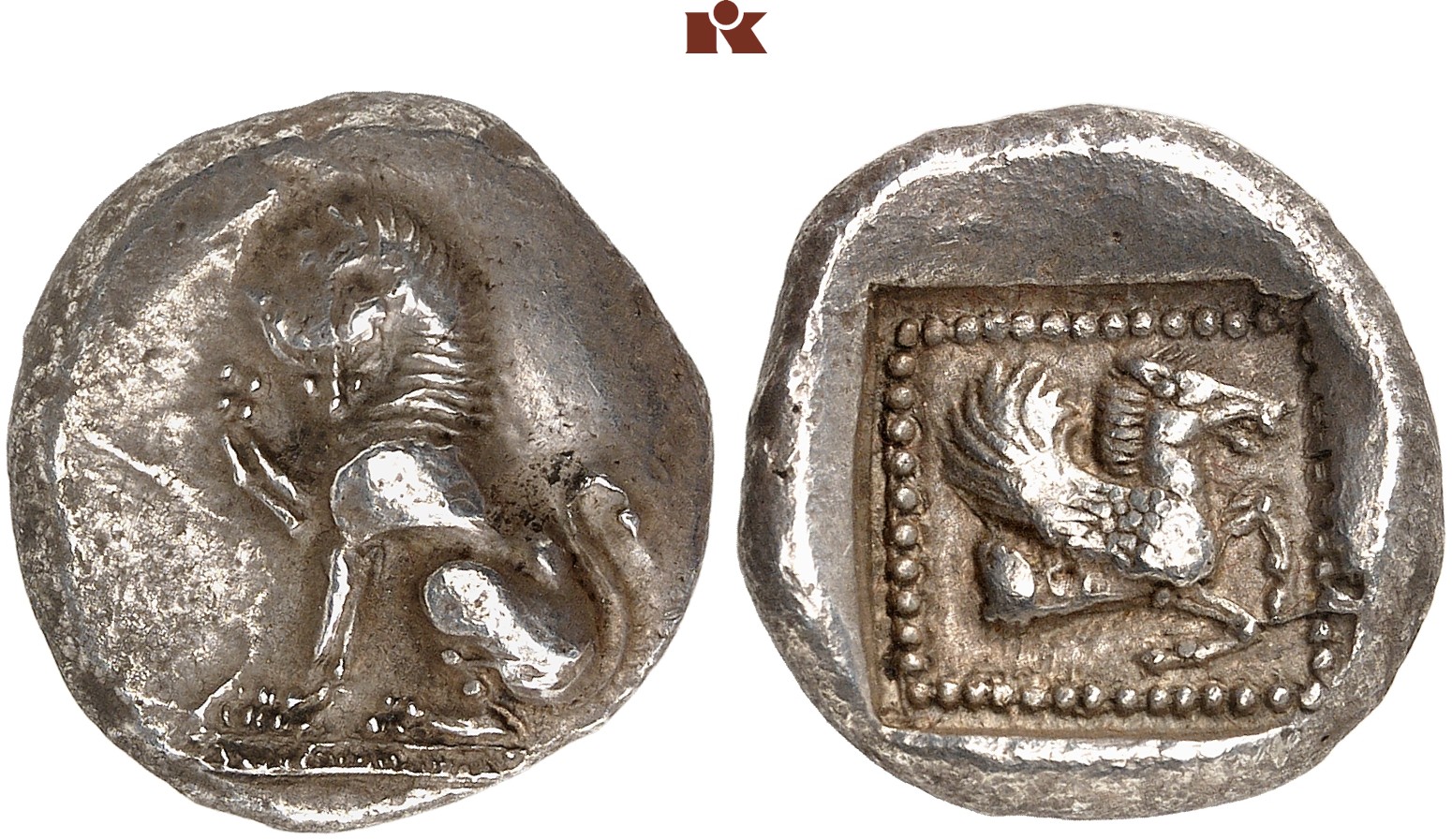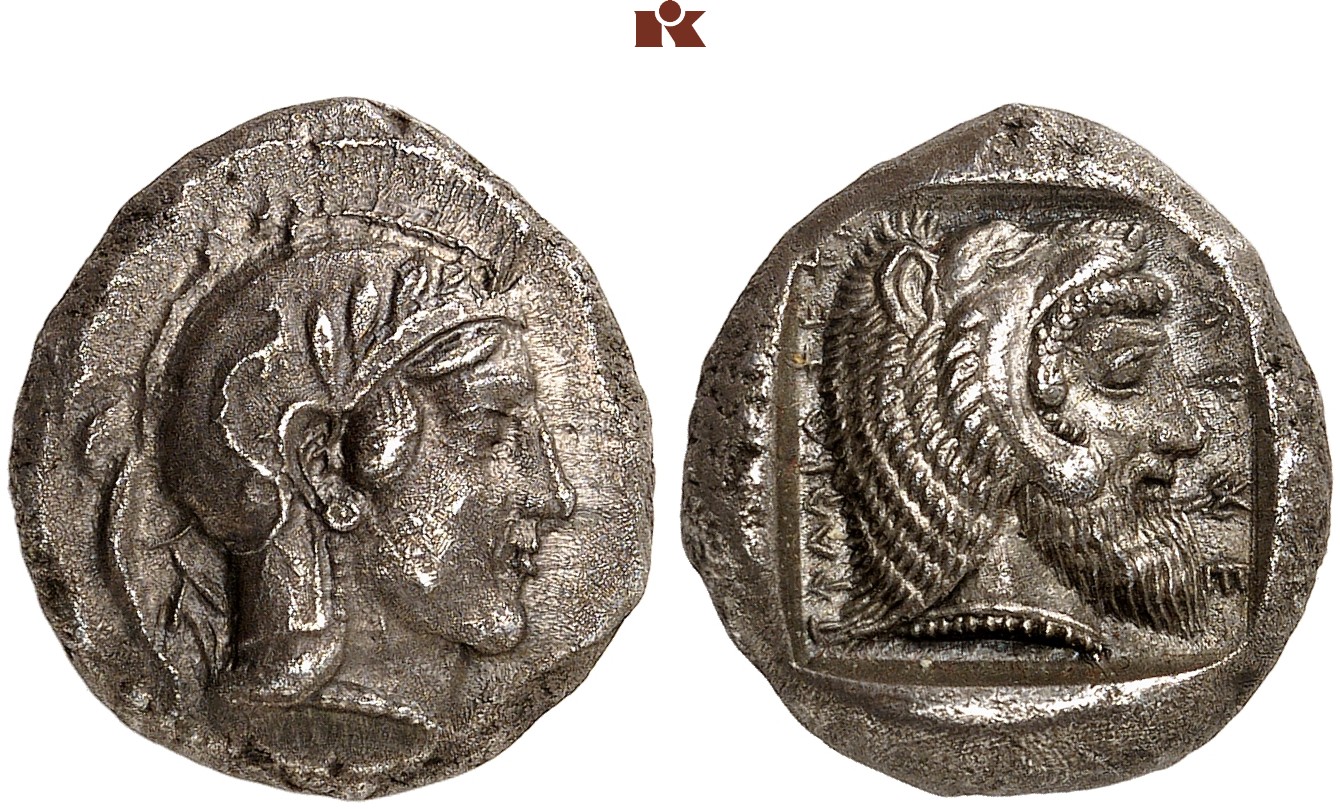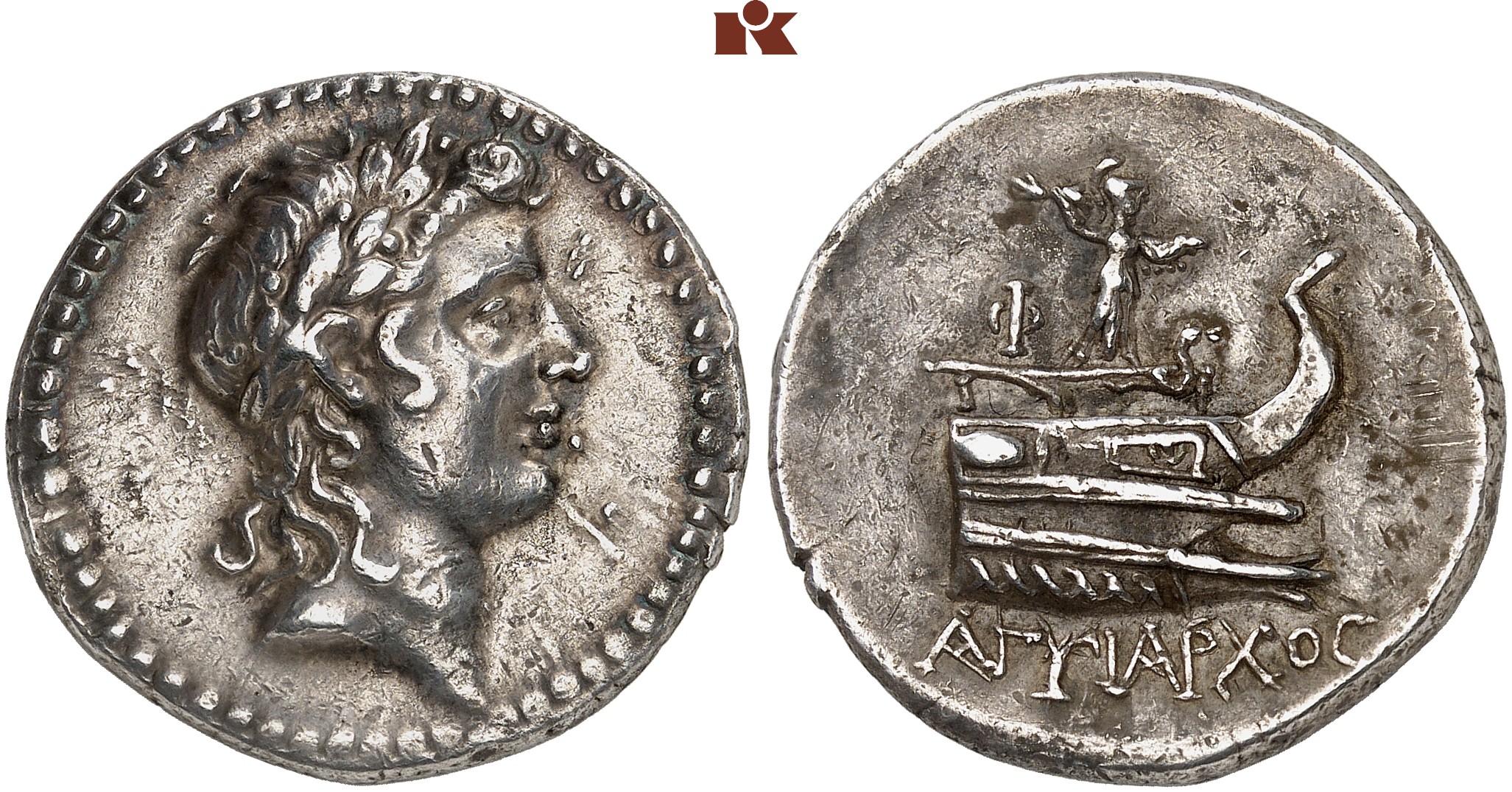Review of our Spring Auction Sale 402 with Coins from the Ancient World
03. April 2024 10:06
The Sayar Collection is one of the most impressive ensembles ever put together in the field of Lycian coinage. Our catalog 402 presenting the first part of the Sayar Collection with issues from Lycia, Pamphylia and Cilicia demonstrates how many rarities a man can gather over the course of more than 30 years. The 512 coins, including many unique pieces, attracted worldwide interest. Thus, many bidders participated in the Künker sale although the coins from southern Asia Minor cannot compete with Greek coins from Magna Graecia or the motherland of classical beauty. The hammer prices were impressive. And yet, compared to issues from other ancient fields, Lycian coins are still an affordable option. We present the five most expensive pieces from the Sayar Collection.
Top 5:
Lycian coins are traditionally auctioned off as “Greek” pieces, although the inhabitants of this region had different roots they referred to. This does not only become apparent when looking at their script but also when examining the depictions. Even when we see something we think we are familiar with on Lycian coins, such as this Pegasus, we need to be careful when interpreting the motif. After all, Lycians considered the winged horse to be the companion of the Luwian weather god. It is therefore interesting that the Greeks set their myth of Bellerophon and Pegasus in Lycia of all places. It is well worth considering that this legend might be the Greek interpretation of a local myth. In any case, the stater from the predynastic period, created around 480 BC, sold for 7,000 euros.
Top 4:
While we know comparatively much about the satraps of western Asia Minor, there are hardly any sources on rulers such as Kherei. The latter administered the region of Xanthos on behalf of the Persians from around 410 to 390 BC. His name can be found on numerous coins, including this stater which shows a depiction of Heracles with an almost archaic smile on the reverse. Its new owner considered this smile worth 9,000 euros.
Top 3:
The third most expensive coin of the first part of the Sayar Collection is not from Lycia but from the Greek city of Phaselis in Pamphylia. Its reverse depicts the bow of a ship, which can be interpreted in two ways: On the one hand, Phaselis was an active trading city with an important port. On the other hand, its first settlers came from Lindos in Rhodes to secure timber supplies for their island. After all, this Mediterranean island owed its importance predominantly to its fleet. Thus, the bow might not only represent the city’s power as a trading post but also the most important export product of the city. The stater from Phaselis that was offered at Künker is of highly unusual style, which explains its hammer price of 11,000 euros.
Top 2:
The second most expensive coin from the collection is from Lycia. It is a stater from the city of Aperlai, minted during the reign of Kuprilli, i.e., around 480-440 BC. It depicts two dolphins on the obverse; a triskeles on the reverse. Kuprilli was probably the most important Lycian dynast, controlling several cities. His symbol was the triskeles, as can be seen on this coin. We do now know about the relation between Kuprilli and Aperlei, because the first non-numismatic sources we have on this city are from the Roman imperial period. Thus, it was not its history but its rarity that caused the price of this stater to jump from 2,000 to 12,000 euros.
Top 1:
A stater of Sppntaza also fetched 12,000 euros, and was placed first in this ranking due to its low estimate compared to the coin in second place. It is easy to explain why the sale of this piece provoked such a fierce bidding war – the coin has an exciting provenance. Among its previous owners are Athanasios Rhousopoulos, whose collection was sold by Jacob Hirsch in 1905, as well as Robert Jameson and Hans von Aulock.
The Most Expensive Coin of Künker’s Auction 402
The most expensive coin of Künker’s entire auction 402 is not from the Sayar Collection but from the Roman Empire. It is a magnificent sestertius by Vespasian from AD 71. Its reverse depicts the emperor in front of a mourning Judaea. The legend IVDAEA CAPTA recalls the victory of the Flavians over the Jews, a subject that is often picked up on coins. The Flavians used this victory as a sort of divine vindication of their young dynasty: If the Roman gods had bestowed their favor on the Flavians in Judaea and granted them victory, it was to be expected that the gods would continue to do so in the future.
These were just a few impressive results of auction 402. Other ancient coins sold for much more modest sums. Take a look at all auction results! It is always surprising to see how much history you can buy for very little money.
You can find all auction results online at www.kuenker.de/en. We will publish separate auction reviews for auctions 403-406 and 407. If you have any questions, please do not hesitate to contact Künker, Nobbenburger Str. 4a, 49076 Osnabrück; phone: +49 541 / 962020; fax: +49 541 / 9620222; or via e-mail: service@kuenker.de.







